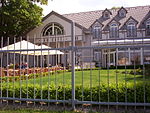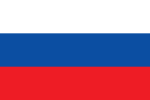Aupark Tower
Buildings and structures completed in 2007Buildings and structures in BratislavaSlovak building and structure stubs

Aupark Tower is a high-rise building in Bratislava located in the district of Petržalka which is a part of the shopping center Aupark. It was built by the HB Reavis Group company in 2007. In 2012, Heitman European Property Partners IV purchased the building for €85.6m. Currently, the office space of the building is occupied by a number of tenants, including Telefónica O2 Slovakia, Eset, Procter & Gamble and AT&T, among others.
Excerpt from the Wikipedia article Aupark Tower (License: CC BY-SA 3.0, Authors, Images).Aupark Tower
Anti-Napoleonic wall, Bratislava Dvory (District of Bratislava V)
Geographical coordinates (GPS) Address Website Nearby Places Show on map
Geographical coordinates (GPS)
| Latitude | Longitude |
|---|---|
| N 48.134125 ° | E 17.105981 ° |
Address
Aupark
Anti-Napoleonic wall
851 01 Bratislava, Dvory (District of Bratislava V)
Region of Bratislava, Slovakia
Open on Google Maps









